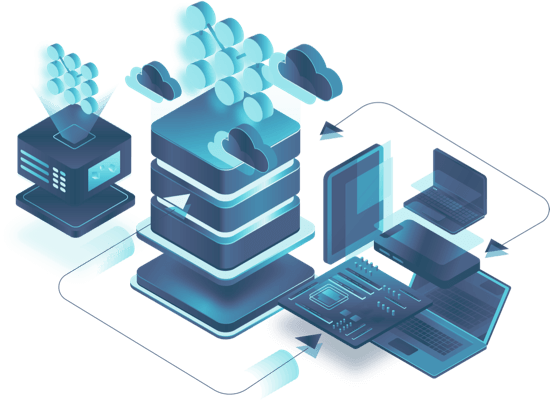The recent IoT Slam 2025 conference outlined cutting-edge trends and technologies covering the entire spectrum of IoT across industries. The main takeaways include improvements in edge AI applications, discussions around cloud computing, and the importance of lifecycle management for connected products. Eystein Stenberg, CTO at Northern.tech, was invited to speak on a panel about Edge AI, drawing from his experience working on IoT and OTA updates with thousands of OEMs, and leading innovative product development for over a decade.
Artificial intelligence (AI) is a hot topic across all technology spaces, and this trend is no different in the IoT marketplace. A major discussion about AI in IoT products centers around the applications of Edge AI, or AI that operates at the edge of networks directly on local devices. With edge computing capabilities, OEMs can deploy AI models directly on local IoT devices; in turn, these devices are capable of real-time processing without the reliance on traditional cloud infrastructure. Edge AI for IoT products enhances processing and privacy by protecting data locally on the device. As AI continues to mature and grow in complexity and applicability, IoT devices with edge AI will only become more prominent.
The application of Edge AI in IoT
Integrating AI technology with IoT devices unlocks the possibility of increasing efficiency, security, and overall usability through smarter capabilities. Edge AI enables a device to “learn” from ongoing data collection and analysis, allowing it to improve and navigate extremely specific use cases or environments. The capabilities of IoT with Edge AI already exist in use cases today, including:
Enhanced applications for IoT-powered cameras
- Physical security: With Edge AI capabilities, smart cameras can filter relevant events, identify breaches in real time, or even use facial recognition and biometrics for access control and perimeter security.
- Non-security surveillance: Edge AI integrations with surveillance systems can instantly identify activity in video footage or use intelligent recognition to monitor user activity. For example, surveillance systems using Edge AI can enable contactless parking garages that automatically identify the length of stay and charge amount.
- Entertainment: Edge AI in cameras can also automate the recording of high-speed events, like sportscasting. The camera can instantly follow the ball, automating the camera crew for a higher-quality viewing experience.
Smarter automation in robotics
- Manufacturing: Edge AI integrated into industrial automation robots can improve the final quality and quantity of outputs. An intelligent industrial robot could use its instantaneous analysis capabilities to perform real-time quality inspections of each component as it is assembled.
- Transportation: Intelligent algorithms in inteligent vehicles can improve safety and situational responsiveness. An autonomous model can learn in real time and adjust to a seemingly infinite number of possibilities.
Edge AI will play a large role in the future of IoT. The integration of these capabilities improves IoT offerings across all verticals, making them quicker, more intelligent, and more secure.
Managing Edge AI IoT products throughout the lifecycle
The ability for devices to iterate quickly after production is the crux of Edge AI IoT product potential. However, integrating Edge AI into connected products adds yet another layer of complexity to lifecycle management as an additional product layer, the AI component, needs to be updated and maintained. Furthermore, security must be ensured for the success and longevity of Edge AI-empowered IoT devices. Integrating AI adds another product layer with required security and risk considerations beyond traditional IoT security. For example, an AI layer can be the target of data corruption or data poisoning attacks where adversaries inject incorrect data to train an AI and modify its functionality. AI integrations often reduce and, in some cases, remove human oversight, a double-edged sword where there is no chance for human error, but also less direct monitoring of anomalies without implementing additional automations.
With increasing complexity and expanding use cases in the connected product market, traditional product management approaches fall short. A structured, end-to-end framework is required to keep pace with the dynamic nature of modern connected devices, and managing the product throughout the lifecycle is foundational. Device Lifecycle Management (DLM) is a comprehensive framework for managing devices throughout their entire lifecycle from design to decommission, which provides the tools to maintain, improve, and continually protect a connected device which is invaluable in the age of dynamic software products.
As the prominence of Edge AI continues to grow and innovate IoT offerings, the importance of DLM will only increase, separating the leaders of innovation by their ability to fully embrace DLM.
Embracing edge over cloud computing
As AI continues to mature, the question of whether it should reside at the edge or in the cloud is becoming central to how products are built and maintained. Cloud computing, which sends data from the device to a remote server for processing, is well-suited for heavy workloads like training large models or handling massive datasets. It offers virtually unlimited computational power and is ideal when accuracy and memory are prioritized over latency or energy use.
Edge computing, by contrast, processes data locally on the device. This model is increasingly favored in real-time applications, environments with unreliable connectivity, or in battery-powered or remote devices where energy efficiency is critical. Edge computing reduces latency, enhances privacy, and enables immediate decision-making without depending on continual cloud access.
As AI capabilities continue to evolve, more intelligence is shifting to the edge. Cloud computing still has its use cases, but the efficiency and growing prominence of edge computing are attractive to many manufacturers.
The importance of ongoing updates and management for device security
Technology and trends change over time, but the importance of security remains front and center. Unpatched vulnerabilities still remain a key reason for compromises across connected product verticals. Verizon’s 2025 Data Breach Investigation Report (DBIR) puts unpatched vulnerabilities as the most prominent cause of breaches next to credential abuse.1 It took an average of 32 days to patch a vulnerability, with only 54% of edge device vulnerabilities patched after a year. Although technology is becoming more advanced, the threat of breaches is going nowhere, and the importance of strong security is non-negotiable.
When releasing innovative connected devices into the market, the certainty remains that they must stay secure while improving over time. Upholding comprehensive DLM practices, automating security updates, and ensuring ongoing safety and availability are essential to remain trustworthy in today's market. OTA updates are a core safeguard to enable ongoing security and iteration throughout the device lifecycle.
Resources
https://www.verizon.com/business/resources/reports/dbir/
Recent articles
The struggle to reach global markets for medical device manufacturers: The importance of international compliance
The differences between the US FDA’s device approval process and the EU’s medical device regulation (MDR): An essential dual-compliance framework for global manufacturers
Why OTA updates are now mission critical for future-proofed device lifecycle management
Learn why leading companies choose Mender
Discover how Mender empowers both you and your customers with secure and reliable over-the-air updates for IoT devices. Focus on your product, and benefit from specialized OTA expertise and best practices.




